




Beyond the Milky Way
Beyond our Milky Way galaxy, multiwavelength astronomy unlocks a treasure of
information. Visible light images show us the detailed structure of various
types of galaxies, while radio images show quite a different picture of huge
jets and lobes of material ejected from galactic cores. X-rays are used to
detect the signature of black holes in the centers of galaxies - the extremely
hot material being pulled into a black hole at tremendous speeds. Infrared
light has been used to discover thousands of galaxies which are undergoing
intense star formation. Radio studies have detected
the radiation left over by the Big Bang.
As an example of the valuable information gained about another galaxy by viewing it at many wavelengths, let's take a multiwavelength look at the spiral galaxy Messier 81 the northern constellation of Ursa Major.
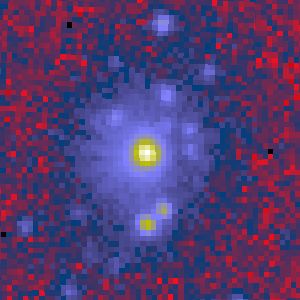
X-Ray (ROSAT) |
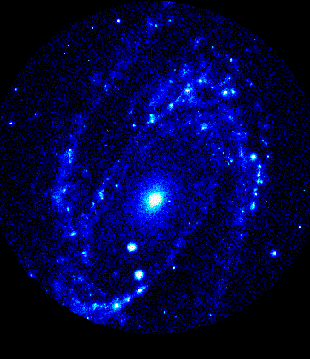
Ultraviolet (ASTRO-1) |
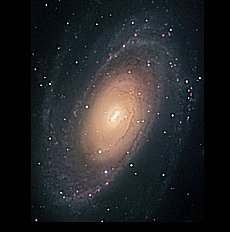
Visible (Robert Gendler) |
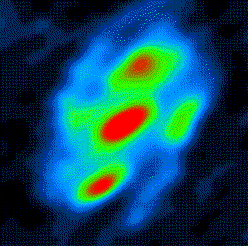
Infrared (IRAS) |
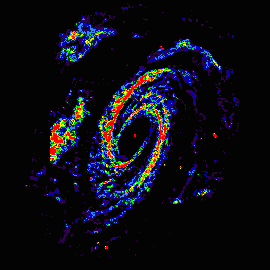
Radio (VLA) |
The brightest region in this X-ray image is the central nucleus of Messier 81.
The yellow knot just below the center is actually due to a quasar located in
the distant background. The ultraviolet image reveals the hot and young stars,
and traces the spiral structure, revealing multiple spiral arms. Visible light
reveals spiral arms emerging from the inner disk of the galaxy and twisting
outwards. We can also see dust lanes along the arms. In the low-resolution
infrared photograph, the bright (red) regions correspond to areas of dust being
warmed by newborn stars. There is a large central concentration, and two
others located in the spiral arms. The radio map shows the distribution of
neutral hydrogen gas from which future stars will be born. For additional
images of Messier 81 at various wavelengths, visit
our
Multiwavelength Gallery.
Centaurus A is a very peculiar galaxy; or, should we say "galaxies?" Astronomers believe that its strange appearance is the result an intergalactic collision, in which a dusty spiral galaxy and a bright elliptical galaxy merged hundreds of millions of years ago. A black hole is thought to lie at its center.
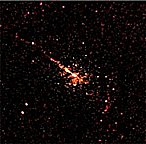
X-Ray (CXO) |
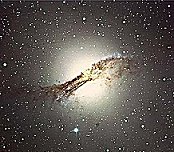
Visible (Malin/AAO) |
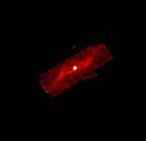
Infrared (ISO) |
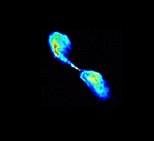
Radio (VLA) |
The X-ray image of Centaurus A shows a large jet of material extending over 25,000 light years. This high-energy jet provides evidence of a black hole in the center of this peculiar galaxy. In visible light, we can see a spherical concentration of the bright stars and a dark obscuring band of dust. This dust band is heavily warped, suggesting that an unusual event has happened in the past. The infrared image reveals the flattened inner disk of the spiral galaxy that once rammed into the elliptical galaxy. The radio image looks very strange indeed. A pair of narrow jets appears to be shooting out of Centaurus A, with the radio emission spreading out at greater distances from the galaxy center. The radio jets are made up of plasma, a high-temperature stream of matter in which atoms have been ionized and molecules have been split apart. For additional images of Centarus A at various wavelengths, visit our Multiwavelength Gallery.

|

|

|